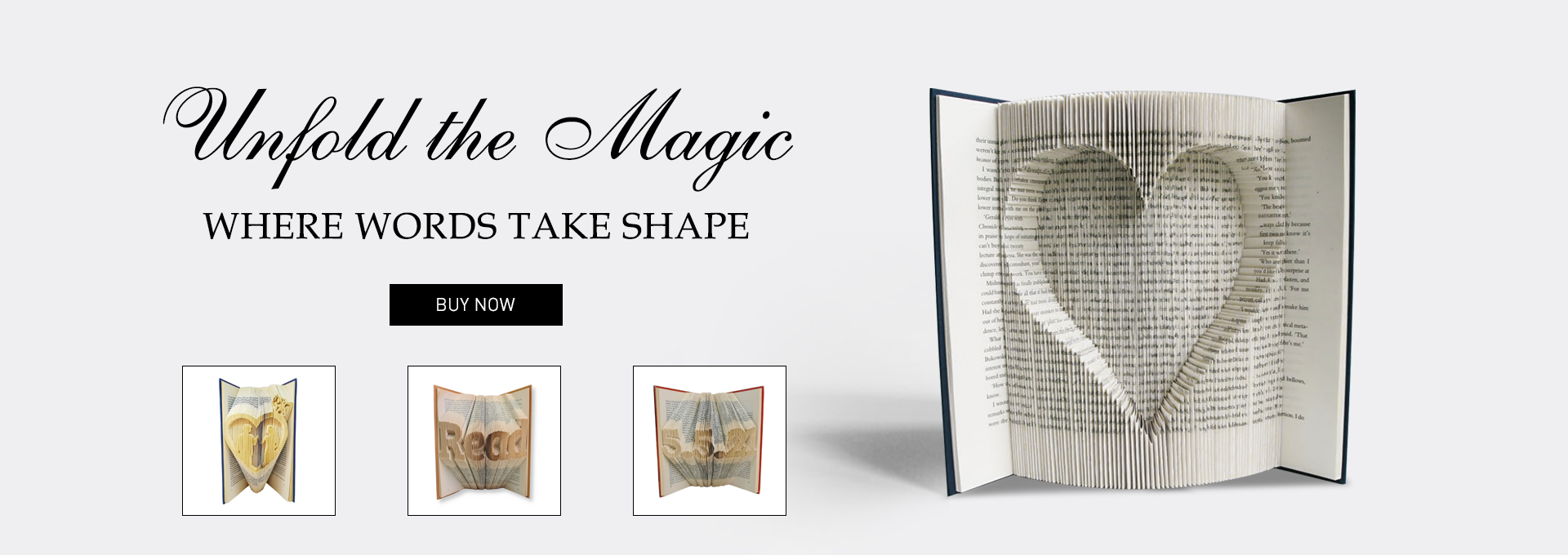Folding Pages: Transforming Books into Artful Sculptures
In a world where digital media dominates, the tactile experience of a physical book remains unparalleled. Book folding has emerged as a captivating form of art that transforms the pages of beloved novels into stunning three-dimensional sculptures. This creative technique invites book lovers and artists alike to explore the intersection of literature and visual expression, breathing new life into worn tomes and forgotten stories.
The process of book folding marries precision and imagination, allowing individuals to reimagine the aesthetic potential of the pages within. Each fold tells a story of its own, and through careful manipulation, a flat, unassuming book can evolve into intricate designs that are both beautiful and engaging. Whether crafting delicate patterns or shaping recognizable forms, book folding opens the door to a unique artistic journey that celebrates the beauty of the written word in a fresh and innovative way.
The Art of Book Folding
Book folding is a captivating technique that transforms ordinary books into intricate three-dimensional sculptures. This art form utilizes the pages of a book, strategically creasing and folding them to create visually stunning designs. Each fold meticulously alters the shape and dimension of the book, turning it into a remarkable piece of artwork that can speak volumes about creativity and craftsmanship.
The process of book folding involves careful planning and precision to achieve the desired effect. Artists often start with a design or template, mapping out how each page will be folded to achieve the final shape. Whether creating delicate floral patterns or intricate geometric forms, the artist’s vision comes to life through the combination of imagination and technique. This labor-intensive craft not only showcases the aesthetic potential of books but also encourages a deeper appreciation for the written word.

As book folding gains popularity, it continues to evolve with new styles and methods. Artists experiment with various types of books, from vintage volumes to contemporary paperbacks, showcasing their unique personalities and themes. Social media platforms have played a significant role in sharing this art form, allowing enthusiasts to connect, share creations, and inspire one another. Through this dynamic exchange, book folding remains an ever-evolving medium, where art meets literature in a wonderfully creative embrace.
Techniques and Tools
Book folding requires a combination of techniques and tools to achieve stunning results. One of the primary methods involves measuring and marking the pages according to a predetermined pattern. This can be done using a ruler and pencil for precision. The pattern dictates how many pages to fold and at what angles, making it essential to plan ahead. Some artists prefer to use digital templates or software that generates patterns, allowing for a more complex design and reducing the time spent on calculations.
The most common tool used in book folding is a bone folder, which is a sleek, flat tool that helps create crisp, clean folds without damaging the paper. Other useful tools include scissors for trimming and a craft knife for accurately cutting the pages if needed. A pencil and ruler are indispensable for marking the fold lines, ensuring that each fold is as even and symmetrical as possible. For those new to this art, starting with simpler patterns and gradually increasing complexity can lead to improved technique and confidence.
In addition to the basic tools, many artists incorporate decorative elements into their book folding projects. This may include colored paper, embellishments such as beads or ribbons, and even paints or inks to enhance the visual appeal of the finished piece. Experimenting with different materials can lead to unique textures and effects, making each sculpture distinct. As creators become more skilled, they often develop their own signature styles, resulting in a personalized approach to this beautiful form of art.
Creative Projects and Inspiration
Book folding offers a unique opportunity to unleash creativity and turn ordinary books into stunning pieces of art. Many artists and crafters find inspiration in the shapes that can be created through various folding techniques. From simple hearts and stars to intricate designs like animals and architectural structures, the possibilities are endless. Each folded page transforms the book into a three-dimensional sculpture, captivating viewers while encouraging them to appreciate the artistry involved in the process.
If you are seeking project ideas, consider transforming old or damaged books that might otherwise be discarded. Utilizing these books not only gives them a new life but also aligns with sustainable practices. You can create thoughtful gifts or home decor items tailored to personal tastes. For example, customizing a book fold to represent a favorite hobby, such as a musical note for music lovers, can make your artwork even more meaningful. Furthermore, books folded into shapes that resonate with loved ones can serve as heartfelt reminders of shared memories.
To spark creativity, explore online communities and social media platforms where artists share their book folding projects. These spaces are filled with tutorials, inspiration, and challenges that encourage experimentation with different techniques and designs. Workshops and classes are also available, offering guidance from experienced instructors. By engaging with click here , you can not only refine your skills but also discover new ideas that can elevate your book folding practice into a dynamic form of artistic expression.